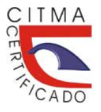Physiological responses of pelibuey sheep in a traditional production system in the rainy season
DOI:
https://doi.org/10.5281/zenodo.11528209Keywords:
Heat stress, Heat tolerance index, Respiratory rate, Temperature and humidity index, Thermal welfareAbstract
The increase in temperatures associated with climate change will have negative effects on the welfare of animals that are raised in grazing systems, favoring heat stress. Studies on physiological indicators in sheep can contribute to take measures to confront these environmental conditions on animals. The aim was to evaluate physiological indicators and their relationship with environmental parameters in a traditional production system in Ciego de Ávila, in the rainy season. Ten adult animals were used, in the months of May, July and September, with four days of observation each month. The environmental indicators were determined according to the weather behavior of the days in which the measurements were made, in the morning and afternoon, as well as the physiological indicators. A significant effect of the day´s session was found on physiological indicators: rectal temperature, respiratory rate and heat tolerance index, with the highest values in the afternoon. THI values were higher than 72,2 in all the weeks, both in the morning and in the afternoon and determined stress and severe stress in 66,6 % of the time in the afternoon session. High correlations were obtained between respiratory rate, rectal temperature and THI, which explains the heat stress conditions to which the animals are subjected in this traditional production systems in the rainy season. The relationships between physiological behavior and climatic variables reflect the importance of thermal welfare in animals, and the need to adjust environmental conditions by incorporating natural shade in grazing areas to reduce the incidence of solar radiation on animals.
Downloads
References
ALEENA, J. …[et al.] (2020). “Heat stress impact on blood biochemical response and plasma aldosterone level in three different indigenous goat breeds”. Journal of Animal Behaviour and Biometeorology. Vol. 8, No. 4, pp. 266-275. Disponible en: http://dx.doi.org/10.31893/jabb.20034. Visitado 14 abril 2023.
AVENDAÑO-REYES, L. …[et al.] (2020). “Biological responses of hair sheep to a permanent shade during a short heat stress exposure in an arid region”. Small Ruminant Research. Vol. 189, 106146. Disponible en: https://doi.org/10.1016/j.smallrumres.2020.106146. Visitado 5 febrero 2023.
BARRAGÁN-SIERRA, A. …[et al.] (2021). “Termorregulación y respuestas reproductivas de carneros bajo estrés por calor. Revisión”. Revista Mexicana de Ciencias Pecuarias. Vol. 12, No. 3, pp. 910-931. Disponible en: https://doi.org/10.22319/rmcp.v12i3.5624. Visitado 20 marzo 2023.
BENEZRA, M. (1954). A new index for measuring the adaptability of cattle to tropical conditions. Journal Animal Science. Vol. 13, Proceeding, pp. 1015.
CERQUEIRA, J. …[et al.] (2013). Estudio de indicadores fisiológicos como predictores de estrés térmico de vacas lecheras en norte de Portugal. AIDA, XV Jornadas sobre Producción Animal, Tomo I, pp. 40-42.
CERQUEIRA, J. …[et al.] (2016). Predicción de estrés térmico en vacas lecheras mediante indicadores ambientales y fisiológicos. Archivos de Zootecnia. Vol. 65, No. 251, p. 357-364.
CHÁVEZ-ESPINOZA, M. …[et al.] (2022). “Sistemas de producción de pequeños rumiantes en México y su efecto en la sostenibilidad productiva”. Revista MVZ Córdoba. Vol. 27, No. 1, pp. e2246-e2246. Disponible en: https://doi.org/10.21897/rmvz.2246. Visitado 10 abril 2023.
De, K. …[et al.] (2017). “Effect of high ambient temperature on behavior of sheep under semi-arid tropical environment”. International journal of biometeorology. Vol. 61, No. 7, pp. 1269-1277. Disponible en: https://doi.org/10.1007/s00484-016-1304-y. Visitado 15 abril 2023.
ESTACIÓN (2019). Estación climatológica del municipio Venezuela. Provincia Ciego de Ávila.
FERGUSON, D.M. …[et al.] (2017). Future challenges and opportunities. Sheep welfare. Advances in Sheep Welfare. pp. 285-293. Dsiponible en: https://doi.org/10.1016/B978-0-08-100718-1.00015-7. Visitado 20 abril 2023.
IDRIS, M., …[et al.] (2021). “Non-invasive physiological indicators of heat stress in cattle”. Animals. Vol. 11, 71, pp. 1-16. Disponible en: https://doi.org/10.3390/ani11010071. Visitado 22 abril 2023.
JIMÉNEZ, M., VERA, J.M. y MORA-DELGADO, J. (2016). Comparación de resultados de modelación de sombras empleando Qgis y ShadeMotion en un potrero arbolado. Revista Agroforestería Neotropical, Vol. 1, No. 6, pp. 41-48. Disponible en: https://revistas.ut.edu.co. Visitado 22 abril 2023.
KIBLER, H.H. (1964). Environmental physiology and shelter engineering. LXVII. Thermal effects of various temperature-humidity combinations on Holstein cattle as measured by eight physiological responses. University of Missouri. Agricultural Experiment Station. Research Bulletin. No. 0862, Disponible en: https://hdl.handle.net/10355/58200. Visitado 20 abril 2023.
LINO, D. M., PINHEIRO, R. S. B., y ORTUNHO, V. V. (2016). Benefícios do bem-estar animal na produtividade e na sanidade de ovinos. Anais do Fórum Ambiental da Alta Paulista. Vol. 12, No. 5, pp. 1297-1305. ISBN 978-85-68242-22-3.
LÓPEZ, R. …[et al.] (2015). Confort térmico y crecimiento de corderas West African pastoreando con y sin acceso a sombra artificial’, Archivos de Zootecnia. Vol. 64, No. 246, pp. 139-46.
Macías-Rioseco, M. …[et al.] (2018). Caída en la producción láctea, signos respiratorios agudos y muertes asociadas a estrés calórico en bovinos lecheros de Uruguay. Veterinaria (Montevideo). Vol. 54, No. 209, pp. 1-9. DOI: 10.29155/VET.54.209.1.
MOTA, R.D. …[et al.] (2016). Bienestar Animal. Una visión global de Iberoamérica. España. Elsevier. 516 pp.
OLIVEIRA, C.C. …[et al.] (2021). Daytime ingestive behaviour of grazing heifers under tropical silvopastoral systems: Responses to shade and grazing management. Applied Animal Behaviour Science. Vol. 240, 105360. Disponible en: https://doi.org/10.1016/j.applanim.2021.105360. Visitado 20 abril 2023.
REYES, J. …[et al.] (2018). Ambiente físico y respuestas fisiológicas de ovinos bajo sombra en horas de máxima radiación. Archivos de zootecnia. Vol. 67, No. 259, pp. 318-323. Diponible en: https://dpi.org/10.21071/az.v67i259.3786. Visitado 22 abril 2023.
SERRANO, J.O. …[et al.] (2022). Determination of typologies of sheep production systems in Ciego de Ávila province. Cuban Journal of Agricultural Science. Vol. 56, No. 1, pp. 1-13.
SHARMA, S. …[et al.] (2013). Effect of melatonin administration on thyroid hormones, cortisol and expression profile of heat shock proteins in goats (Capra hircus) exposed to heat stress. Small Ruminat Research. Vol. 112, pp. 216-223. doi: 10.1016/j.smallrumres.-2012.12.008.
SOLÓRZANO-MONTILLA, J. …[et al.] (2018). Efecto de la presencia de sombra en áreas de pastoreo de ovinos. 2. Actividad animal: Effect of the presence of shade in sheep grazing areas. 2. Animal activity. Pastos y Forrajes. Vol. 41, No. 1, pp. 41-49.
SOUZA, B.B. …[et al.] (2010). Avaliação do ambiente físico promovido pelo sombreamento sobre o proceso termorregulatório em novilhas leiteiras. Agropecuária Científica no Semi-Árido. Vol. 6, No. 2, pp. 59-65. Disponible en: www.cstr.ufcg.edu.br/acsa. Visitado 20 abril 2023.
SPSS, Statistical Package for the Social Sciences (2011). Institute. SPSS-X. User´s Guide. Version 8, Chicago IL. USA.
VALTORTA, S.E. …[et al.] (2002). Milk production responses during heat waves events in Argentina. In: American Meteorological Society (Ed.). Conference on Biometeorology and Aerobiology (15th) International Congress on Biometeorology (16th). Kansas City. Mo. Boston. pp. 98-101.
VERA-HERRERA, I.Y. …[et al.] (2019). “Bienestar en ovinos y su evaluación”. AgroProductividad. Vol. 12, No. 9, pp. 67-73.
VICENTE-PÉREZ, A. …[et al.] (2018). Parámetros bioquímicos y hematológicos en ovinos de pelo con y sin sombra bajo condiciones desérticas. Ecosistemas y recursos agropecuarios. Vol. 5, No. 14, pp. 259-269.
WIJFFELS, G., SULLIVAN, M., GAUGHAN, J. (2021). “Methods to quantify heat stress in ruminants: Current status and future prospects”. Methods. Vol. 186, pp. 3-13. Diponible en: https://doi.org/10.1016/j.ymeth.2020.09.004. Visitado 18 abril 2023.
WORLD METEOROLOGICAL ORGANIZATION. (1989). Animal Health and Production at Extremes of Weather. Technical Note No. 191. Ginebra. Suiza.
Downloads
Published
Versions
- 2024-02-07 (2)
- 2023-09-26 (1)
How to Cite
Issue
Section
License
Copyright (c) 2023 Universidad & ciencia

This work is licensed under a Creative Commons Attribution-NonCommercial-ShareAlike 4.0 International License.





















